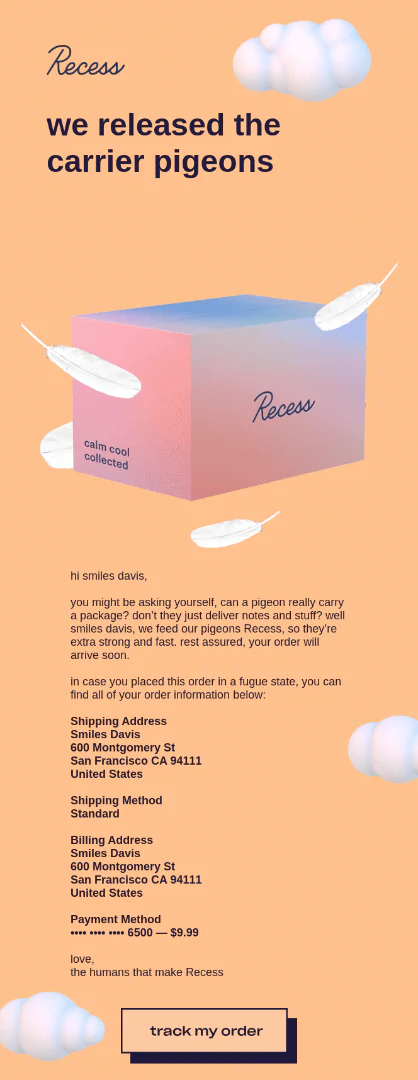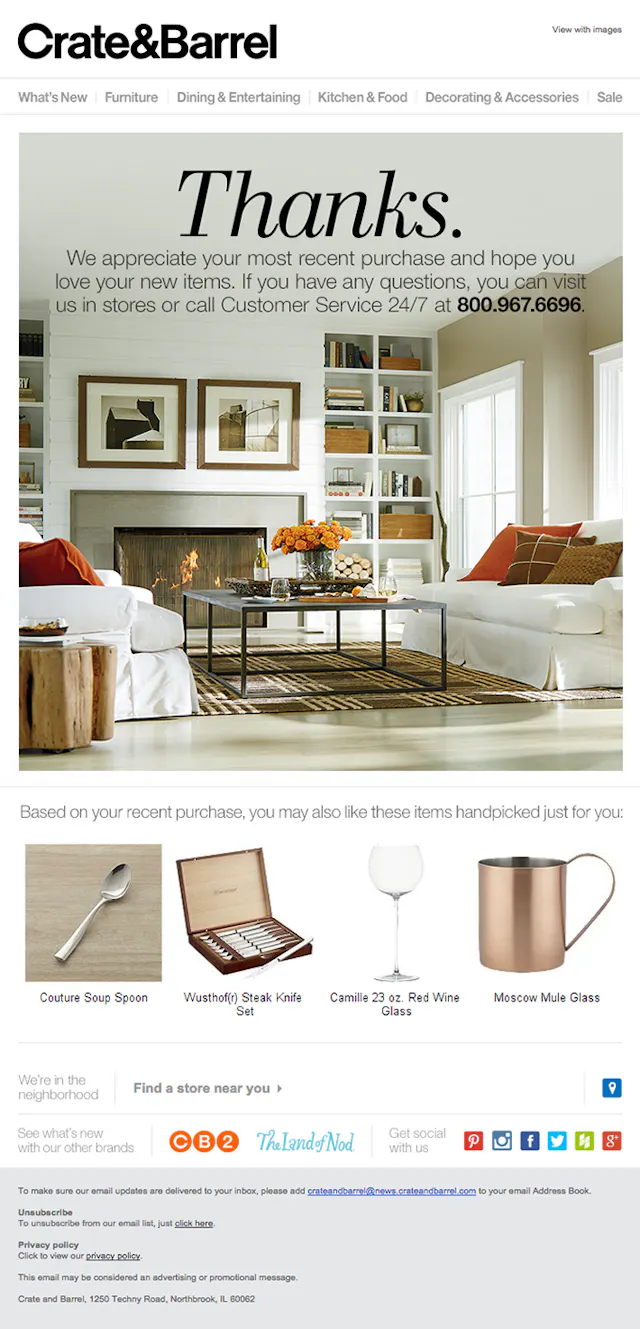The 7-Step Guide to Email Marketing for eCom Brands
- Danny Mukiza
- Aug 11, 2024
- 7 min read

The Power of Email Marketing for eCommerce
In the fast-paced world of eCommerce, email marketing remains a crucial yet underused tool for driving sales, engaging customers, and building lasting relationships.
The power of email marketing (used correctly) yield's an impressive return on investment (ROI) and should be the backbone of your customer retention strategy. Our guide will walk you through the steps of creating, optimizing , and maintaining a successful email marketing program tailored specifically for eCommerce brands. Our The 7-Step Guide to Email Marketing for eCom Brands will arm you with the exact tool's you need!
1. Building a Strong Foundation: Setting Up Your Email Program
Before getting into the nuances of email marketing, we've gotta master the fundamentals.
"We will begin by learning how to tie our shoes" - John Wooden, Legendary NFL coach.
Let's get to tieing!
Choosing the Right Email Service Provider (ESP):
You've got to choose an ESP that integrates seamlessly with your eCommerce platform, offers robust analytics, and has automation features. Platforms like Klaviyo, Mailchimp, and Drip are pretty popular. But for Ecom specifically, Klaviyo is the way to go, they were created specifically to service Ecom brands.
Defining Your Goals:
Without a target to aim at, you're firing blindly into the void. Get specific on what you want to achieve with your email marketing. Brand awarness ? Customer retention ? New product hype ? Sales ? With a proper goal in mind, you can craft a strategy aimed at hitting & achieving your goal.
2. The Perfect Pop-Up
Now that we've got our ESP set up, the very first thing you've got to do is create a valuable email pop-up to convert your cold traffic (site vistiors) into contactable leads.
People who willingly give you their contact info in exchange for you providing them with a valuable offer, aka "x% off your first order". Once you have someone’s email (and/or phone number or both) you can remarket to them with new offers and campaigns forever (or until they unsubscribe) with high degrees of deliverability. For much much cheaper than meta or google ads!!
Here are some of my favourite pop-up's you can use as inspo to create your own (aren't you happy im so nice 😉). There's alot of tools you can use to create high quality pop ups but Amped is the best one's out as of 2024.



2. Crafting High-Converting Emails
We've now tied our shoes and have secured some email addresses to send our emails to, whats next you ask ?
Well, whats in your email content is the heart of your marketing strategy. Allow me to show you how to ensure your emails are compelling and conversion-focused:
Compelling Subject Lines: Your subject line (SL) is the first thing a recipient sees, so it needs to grab attention. Use action-oriented language, personalize where possible, and keep it short. And TEST TEST TEST, A/B testing different subject lines & preview texts (PT) will also provide insights into what resonates with your audience and you can figure out the highest converting SL & PT's to keep in your back pocket to use again. We spoke about the importance of subject line's here.
Engaging Content: The body of your email should be visually appealing and easy to digest. Use high-quality images (make sure you compress them, so you it doesn't take 6 years to load your email!!! Use Iluvimg for this), clear copy, and clear calls-to-action (CTAs). Include product recommendations, personalized offers, and dynamic content that changes based on individual user behavior. You have to let your customers feel seen & truly spoken to.
Mobile Optimization: With 50%+ of emails being opened on mobile devices, make sure that your emails are responsive and look impeccable on any screen size & device. Use single column layout's, large fonts & large buttons. And send test emails to yourself before sending them out to your customers to double check that they look perfect on any screen.
3. Automating Your Email Campaigns
Automation is a game-changer in email marketing. Having automated flows, lets you guide the customers through each key step of their journey, without manually sending every email.
Here's the Key 5:
Welcome Series (6 - 8 Email's Long)
Introduce new subscribers to your brand with a series of emails that firstly, deliver their promised discount, highlight your unique value proposition, your brand story, showcase top products & testimonials. You're trying to build trust here & establish your brand's identity & influence the customer to make the right decision (buying from you).
Abandoned Checkout & Cart Emails (4 - 5 Email's Long)
Post-Purchase Follow-Up (4 - 5 Emails Long)
Sunset Flows, aka Re-engagement Campaigns (1 - 2 Emails Long)
There's many more than this that you should set up & we've got an in-depth article on every single automated email flow you should set-up to maximize revenue & customer satisfaction, right here. With visual email examples you can use for inspiration 😁.
Here's some examples of some crisp Post-Purchase Email's.
4. Personalization and Segmentation
Personalization goes beyond just using the recipient’s first name. It involves delivering content that feels relevant and timely to each subscriber. Send them the right message at the right time:
Behavioural Segmentation
Track customer actions such as browsing history, purchase frequency, and product preferences to tailor your emails. For example, if a customer often buys skincare products, send them emails featuring new arrivals or exclusive discounts in that category. If they mostly shop men's clothes, send them email's with your male centred product selection etc etc..
Dynamic Content Blocks
Predictive Analytics
5. Analyzing and Optimizing Performance
Regularly analyzing the performance of your email campaigns is crucial for continuous improvement:
Key Metrics to Monitor
Keep an eye on open rates, click-through rates (CTR), conversion rates and your deliverability score (Very important!!) . These metrics give insights into how your audience is interacting with your emails and if they're even getting to them!
A/B Testing
Customer Feedback
6. Compliance and Deliverability
This one is HUGE. Make sure your emails are reaching the inbox and comply with regulations. This is essential for building & sustaining a healthy email program:
• GDPR and CAN-SPAM Compliance: Ensure your emails comply with regulations like GDPR (for European customers) and CAN-SPAM (for U.S. customers). This includes providing an easy way for subscribers to opt out and respecting their privacy. Just have an unsubscribe link lol.
• List Hygiene: Regularly clean your email list to remove inactive subscribers and invalid email addresses. This helps keep your deliverability rates high and reduces the chance of getting sent to SPAM jail.
• Sender Reputation: Protect your sender reputation by following best practices. Avoid spammy language, use a verified dedicated sender domain and have DKIM, DMARC and SPF set up. (We dive into these more here)
7. Advanced Strategies for eCommerce Brands
Once you’ve mastered the basics, it’s time to get into more advanced email marketing strategies:
• Triggered Emails Based on Customer Behavior: Set up triggers for specific actions, such as viewing a product without purchasing or spending a certain amount. These triggers can automatically send personalized offers or reminders to nudge the customer toward conversion.
• Customer Loyalty Programs: Integrate your email marketing with a loyalty program to reward your VIP's. Send emails that notify them of their points balance, offer exclusive rewards, or provide early access to sales.
• Cross-Channel Integration: Combine email marketing with other channels like SMS, social media, and retargeting ads. Example, you can use email to drive traffic to a social media contest or a limited-time offer available only to email subscribers.
In conclusion, The 7-Step Guide to Email Marketing for eCom Brands will take your E-com brand to the next level & increase your bottom line.
Email marketing remains one of the most effective tools for eCommerce brands to drive sales, build lasting customer relationships, and grow their business. By following the steps outlined in our guide, you can create a robust email marketing program that delivers consistent results. Just remember to continuously test, analyze, and optimize your campaigns to stay ahead of the competition and deliver max value to your customers.
This guide is packed with actionable insights and practical steps tailored to the unique needs of eCommerce brands. By implementing these strategies, your email marketing program will not only drive revenue but also build a loyal customer base that will evangelize your products.









Comentarii